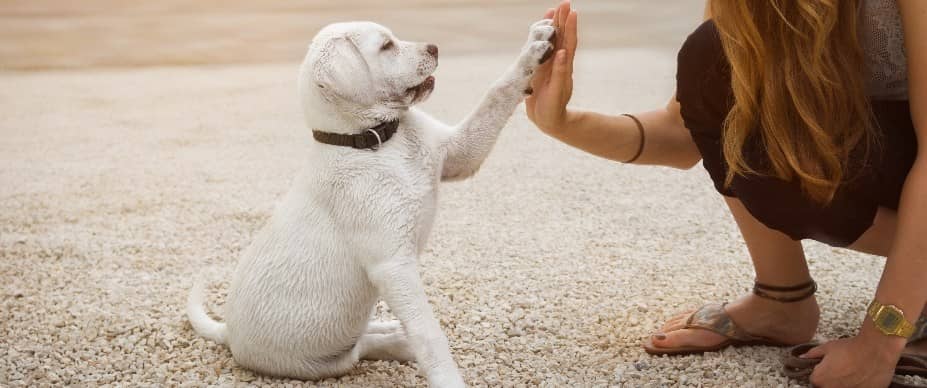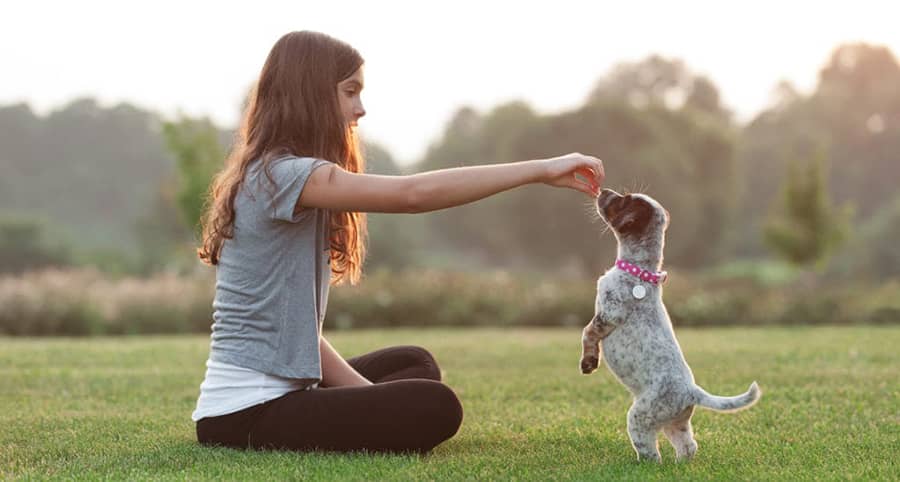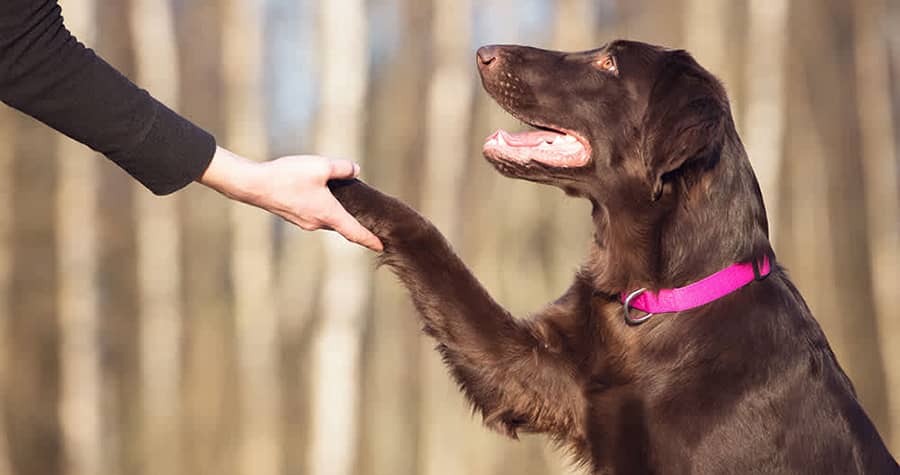To expand your news reach, consider advertising with our media partner, Patch Media, at https://heypapipromotionsmedia.town.news/. Patch is a nationwide news network comprising over 1,000 hyperlocal websites dedicated to community news across the United States. For press release distribution services, please call or visit https://heypapipromotions.com/advertise.
The Ultimate Guide to Training Your Dog
The article was first published on Brobopet.com. As a professional pet product supplier, this website has a lot of pet-related knowledge.
Imagine you just came home with an angelic puppy. Are you feeling extremely happy? A puppy is not only your pet, but also your best friend in the future, and puppy training will become a bridge of tacit communication between you. In this process, training is not only to make the puppy obey your instructions, but also to establish a deep interaction and trust relationship.
Starting puppy training may seem like a bit of an adventure, but the good news is you have an eager-to-learn little buddy waiting in the wings. Every interaction with your puppy is a valuable lesson, and everything from how you greet you to how you walk your dog on a leash will shape your puppy’s understanding of the world and their behavior.
Are you ready to embark on this exciting journey? As an experienced pet products supplier in China, we will lead you to explore the wonderful world of puppy training and help you build a beautiful and close relationship with your new little one.
 https://brobopet.com/wp-content/uploads/2024/01/pet-training-300x126.jpg 300w, https://brobopet.com/wp-content/uploads/2024/01/pet-training-768x321.jpg 768w, https://brobopet.com/wp-content/uploads/2024/01/pet-training-600x251.jpg 600w" alt="pet training" width="800" height="335" />
https://brobopet.com/wp-content/uploads/2024/01/pet-training-300x126.jpg 300w, https://brobopet.com/wp-content/uploads/2024/01/pet-training-768x321.jpg 768w, https://brobopet.com/wp-content/uploads/2024/01/pet-training-600x251.jpg 600w" alt="pet training" width="800" height="335" />Part 1. Basic Knowledge of Puppy Training
A. Understand the learning ability of puppies
Puppies are born to be academics! They are curious about new things and learn fairly quickly. During the training process, understanding your puppy’s learning abilities is a critical step. Every successful learning is a reward for your puppy, so make sure to make training fun and challenging so that your puppy enjoys learning.
B. Establish a correct training attitude
Successful puppy training starts with the right training attitude. Patience, love, and an open heart will make the training process more enjoyable and productive. Remember, you are your puppy’s mentor and companion, not the master. Establishing positive interactions where your puppy feels you care and support will provide a strong foundation for future training.
Part 2. Puppy Personality Test
Are you ready for your puppy to become a training star?
Determining your puppy’s personality and intelligence before starting our training is an interesting and important task because it can help you better understand how to train and meet your puppy’s needs. Here’s a quick quiz to help you determine your puppy’s personality quickly.
Welcome to our Puppy Personality Quiz!
(1) Reaction time test
How quickly a puppy reacts to new things is part of understanding their personality! Put them in a new environment and see if they are quick to explore (4 points), curious and clever (3 points), or adapt slowly and a little shy (2 points), or even extremely slow and shy (1 point)?
 https://brobopet.com/wp-content/uploads/2024/01/pet-training1-300x161.jpg 300w, https://brobopet.com/wp-content/uploads/2024/01/pet-training1-768x411.jpg 768w, https://brobopet.com/wp-content/uploads/2024/01/pet-training1-600x321.jpg 600w" alt="pet training" width="800" height="428" />
https://brobopet.com/wp-content/uploads/2024/01/pet-training1-300x161.jpg 300w, https://brobopet.com/wp-content/uploads/2024/01/pet-training1-768x411.jpg 768w, https://brobopet.com/wp-content/uploads/2024/01/pet-training1-600x321.jpg 600w" alt="pet training" width="800" height="428" />(2) Play preference test
Your puppy’s play preferences can also reflect on their personality! See if they are interested in a certain type of toys (4 points), like all kinds of toys (3 points), are less interested in toys (2 points), or even show no interest in toys (1 point)?
(3) Social ability test
How does the puppy get along with other dogs? Are you warm and friendly (4 points), moderately shy (3 points), introverted and shy (2 points), or even avoid social interaction and obviously shy (1 point)?
 https://brobopet.com/wp-content/uploads/2024/01/pet-training2-300x158.jpg 300w, https://brobopet.com/wp-content/uploads/2024/01/pet-training2-768x405.jpg 768w, https://brobopet.com/wp-content/uploads/2024/01/pet-training2-600x317.jpg 600w" alt="pet training" width="800" height="422" />
https://brobopet.com/wp-content/uploads/2024/01/pet-training2-300x158.jpg 300w, https://brobopet.com/wp-content/uploads/2024/01/pet-training2-768x405.jpg 768w, https://brobopet.com/wp-content/uploads/2024/01/pet-training2-600x317.jpg 600w" alt="pet training" width="800" height="422" />(4) Training response test
Is it a bit challenging to train your puppy? Are they fast and accurate (4 points), moderate and require time to adapt (3 points), or are they slow, difficult to understand (2 points), or even unresponsive or refusing to cooperate (1 point)?
(5) New environment adaptation test
Does the puppy adapt quickly to the new environment (4 points), does it take time to adapt (3 points), or is it slow and difficult to adapt (2 points), or is it even obviously afraid or refusing to be exposed to the new environment (1 point)?
(6) Independent exploration and testing
In a safe environment, is the puppy willing to actively explore (4 points), moderately interested in its surroundings (3 points), or is it less willing to explore (2 points), or even obviously afraid or refusing to explore (1 point)?
Tips: During the test, maintain a relaxed atmosphere and don’t let your puppy feel stressed! Every puppy is unique and this is just one way to get to know them better.
Total score calculation:
20-24 points: Lively and active type
15-19 points: Smart and studious
10-14 points: Naughty and naughty type
5-9 points: Strong sociability
1-4 points: Shy and timid
After the quiz is complete, remember to reward your puppy with some extra love and treats! These recommendations are intended to further improve the accuracy and comprehensiveness of assessments. Ultimately, the goal of this scoring system is to serve as a fun and practical tool to help owners better understand and meet their puppy’s needs.
If you want to prepare some gifts for your pet, you can check out our latest catalog, which can well meet your pet’s needs.
Part 3. Preparation Before Training
A. Create a good learning environment
Before starting puppy training, make sure to create a comfortable learning environment. Just like we all need a quiet place to study, puppies need a space free of distractions. Find a familiar and quiet place where your puppy can focus and more easily participate in training.
B. Prepare appropriate training tools and rewards
Successful puppy training starts with the right tools and delicious rewards! Make sure you have a pocket full of high-value puppy treats, like our beloved Wellness Soft Puppy Bites. Although small, these treats are very attractive to puppies and are the perfect incentive during training.
Additionally, some simple and fun training tools will come in handy. Consider packing some tug toys or balls that are perfect for catching balls so that both you and your puppy can get some enjoyable breaks between training sessions.
Tip: Before training, give your puppy some time outside to use the puppy toilet to make sure they are focused and not overly excited while training.
This is how we prepare before entering training, making learning enjoyable and effective! Remember to make training an enjoyable interaction that will benefit both you and your puppy.
Part 4. Basic Puppy Command Training
A. Sit and Standby Training Procedures
Prepare rewards: Use high-value puppy treats like Wellness Soft Puppy Bites.
Guide to sit: Take a small piece of treat and hang it in front of the puppy’s nose, then slowly move your hand back so that the puppy’s head moves down naturally. When he sits, reward him immediately.
Add commands: When the puppy starts to understand the action of sitting, start using commands in conjunction, such as “sit”. Each time it executes successfully, the reward is immediate.
Start time: 8 weeks old
B. Walking and following training steps
Wear a Collar and Leash: Put a collar and leash on your puppy in a safe environment.
Guided walking: Pull on the leash to encourage the puppy to follow you. Use a reward to emphasize the behavior it follows.
Gradually increase the distance: Start with the first few steps and gradually increase the distance you walk. When the puppy is able to follow smoothly, reward it.
Start time: 10 weeks old
C. Basic hygiene training training steps
Establish a fixed time: Determine a fixed time for going to the toilet, such as getting up in the morning, after eating, after playing, etc.
Guide to designated areas: Guide your puppy to a designated sanitary area before each bathroom break. Wait for it to complete and be rewarded.
Consistency is key: Maintain a consistent time and place to help your puppy develop regular bathroom habits.
Start time: 8 weeks old
D. Come down to the training steps
Prepare a reward: Use a treat your puppy loves and keep a happy tone.
Lead Down: Dangle the treat over your puppy’s head and slowly move in front of him. When it comes down, reward immediately.
Repeat exercise: Repeat this process several times, gradually reducing the gestures and introducing the command “come down.”
Start time: 10 weeks old
E. Handshake training steps
Guided action: Holding the treat, reach out to the puppy’s feet. Encourage him to gently touch your hand with his paw.
Reward and encourage: Whenever the puppy successfully shakes hands, reward it in time and express a happy tone.
Adding the command: Gradually use the command, “handshake”, at the moment of handshake.
Start time: 12 weeks old
Tips: Be happy when training and give your puppy positive feedback and rewards at the end of each session. Also, patience and consistency are the keys to training! Make the learning process fun and both you and your puppy will benefit.
Want to wholesale high-quality and novel pet products from China? We have prepared 5000+ attractive pet supplies for you at the best prices!
Part 5. Common Problems Encountered and Solutions
A. Bite people and objects
Problem description: Biting is a common behavior among puppies, especially when they are young.
Solution: Provide appropriate chew toys: Provide puppies with appropriate chew toys and guide them to focus their attention on these toys.
Calm response: If your puppy bites you, stay calm, stop the interaction, and let him understand that the bite will interrupt the interaction.
Social training: By interacting with other dogs, puppies learn to control the intensity of their bites during play.
B. Toilet problems
Problem Description: It can be a challenge for puppies to go to the bathroom in inappropriate places.
Solution: Set a fixed time: Take the puppy to the designated sanitary area at a fixed time every day to cultivate the habit of regular toilet use.
Reward correct behavior: Reward and express encouragement when your puppy goes to the toilet in the right place.
Supervision and correction: When you find your puppy going to the toilet in an inappropriate place, use a gentle tone to stop it and guide it to the right place.
C. Failure to follow instructions
Problem description: Puppies may be unwilling to follow instructions in certain situations, possibly due to distraction or other reasons.
Solution: Concise instructions: Use simple and clear instructions and avoid using complex language.
High-Value Rewards: Use high-value rewards that your puppy loves so they understand that following commands will result in a tasty reward.
Practice multiple times: Practice the same command multiple times in different environments and situations to help the puppy establish the connection between command and behavior.
Tip: Patience and consistency are the keys to problem solving. Each successful attempt should be rewarded with positive feedback and rewards so that your puppy understands the benefits of correct behavior.
Whether you want toys, leashes or clothing for your pet, we are your best choice. Contact us today to get the latest catalog!
Part6. Advanced Training Techniques
A. Teach more complex instructions
(1) Squat (Down): Guidance: Use the reward in your hand to guide the puppy to gradually move from sitting to lying down. Gradually introduce the password “Down”.
Gradually increase the duration: When the puppy is able to lie down, gradually increase the time required to lie down, reward and encourage it to maintain the position.
(2) Wait (Stay): Start simple: After your puppy sits, use your hands to control its movements, say “Stay” and reward. Gradually increase the waiting time.
Gradually increase the distance: After the puppy can wait stably, gradually increase the distance between you and it, reward and express praise.
(3) Return to the master (Come): Use a lure: Use something your puppy is interested in, such as a treat, to guide him toward you. When it approaches, reward and use the command “Come”.
B. Social training and interpersonal communication
(1) Socialize with other dogs: Organize social activities: Arrange safe social activities for puppies with other dogs to help them learn to get along with their companions.
Observe interactions: Pay attention to how your puppy interacts with other dogs, encourage positive social behaviors, and guide inappropriate behaviors when appropriate.
(2) Interpersonal communication skills: Interaction with strangers: Let the puppy interact with strangers in a controlled environment and gradually adapt to interacting with different people.
Reward positive interactions: When your puppy actively interacts with people, reward them so they can build positive relationships.
(3) Outdoor training: Gradually introduce external environments: Train in different environments and gradually increase external stimulation. Reward your puppy for adapting to the new environment and interacting positively.
Part 7. Continuity and consistency of training
A. Develop an ongoing training plan
1. Create a daily schedule:
Establish regular times for daily training to ensure your puppy is trained at the appropriate time.
Includes daily activities, training, socialization and relaxation time to help your puppy develop regular habits.
2. Constantly challenge and increase difficulty:
Regularly adjust the training plan and gradually increase the difficulty of the instructions to promote the puppy’s intellectual and behavioral development.
B. Maintain a consistent training approach
1. Unify passwords and gestures:
Use consistent commands and gestures to ensure your puppy understands your instructions clearly.
2. Reward consistency:
Be consistent in your rewards to ensure your puppy can accurately predict which behaviors will be rewarded.
3. Consistency among family members:
Communicate with family members to make sure everyone is using the same training methods to avoid puppy confusion.
END
Training is the cornerstone of good behavior and interactions as your puppy grows. With consistent training, it is possible to produce a puppy companion that is happy, obedient, and well-adjusted to human society. We will compile more information to share with you later. If you need wholesale pet supplies, you can also contact us!
Comments